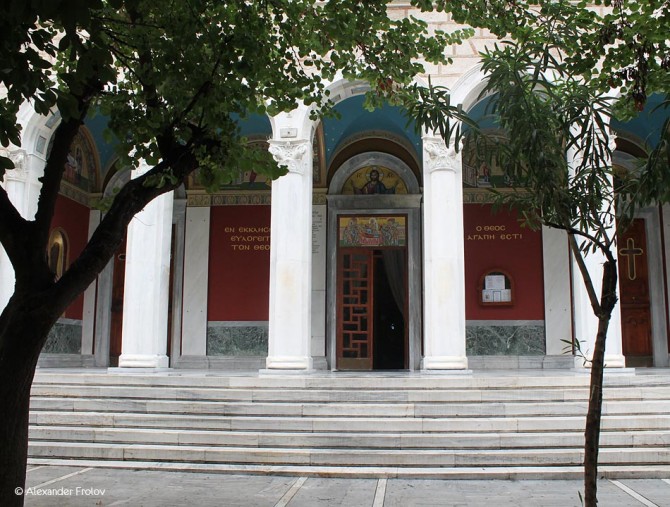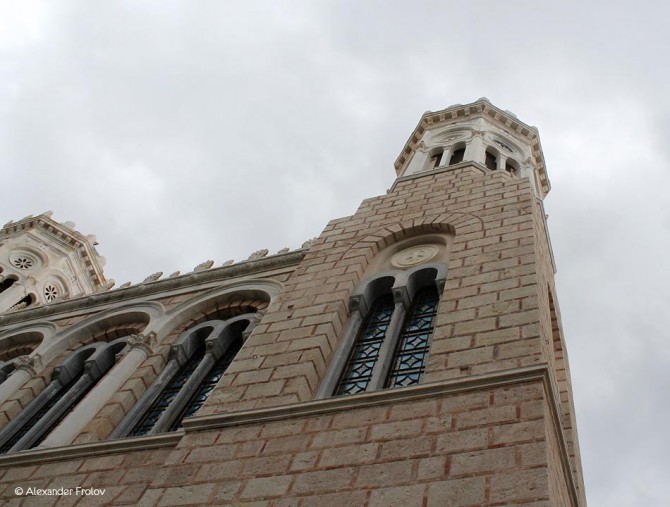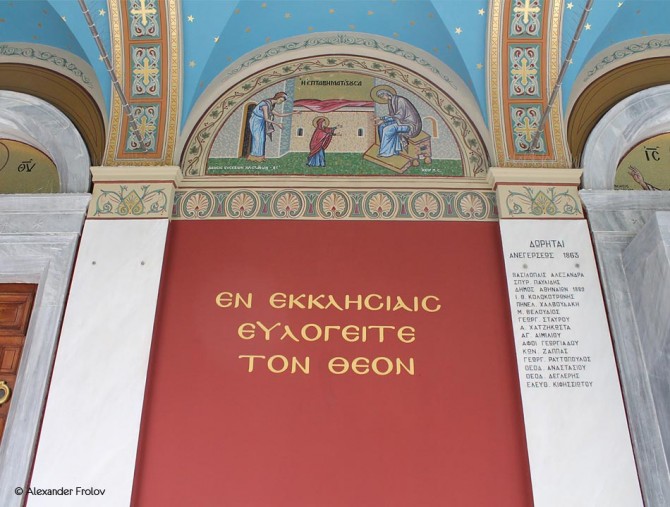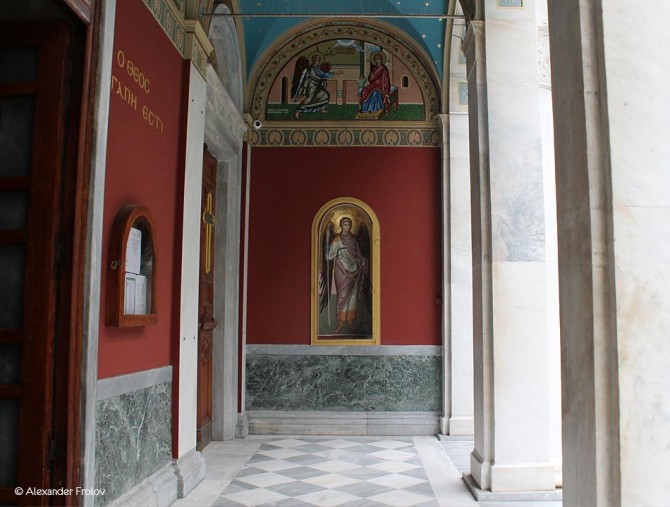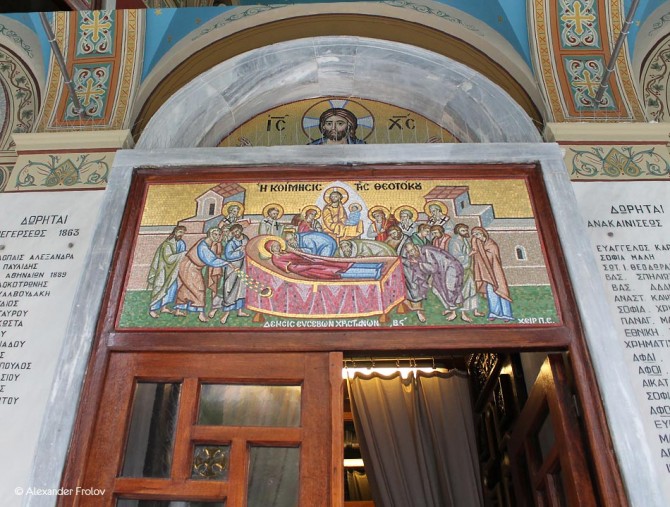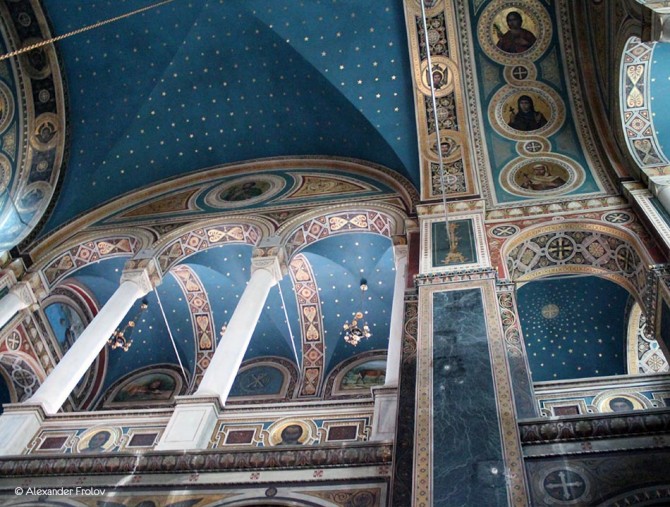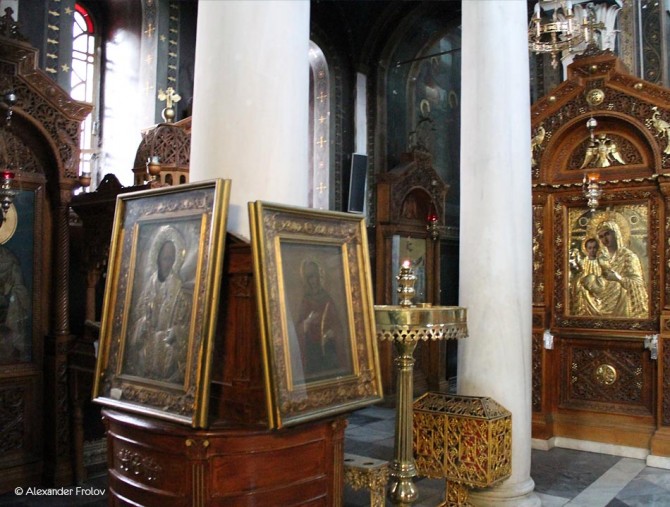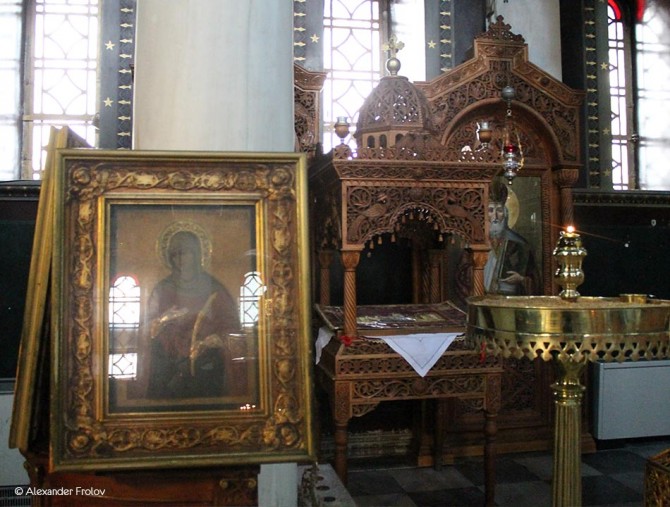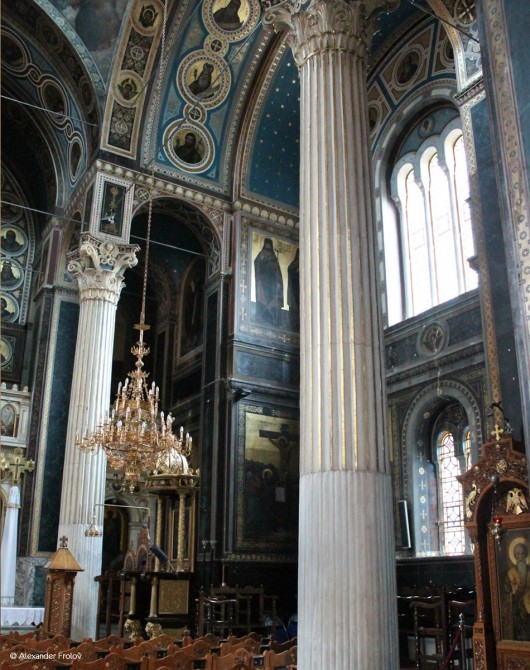Панагия Хрисоспилиотисса
После разрушения храма первые попытки реконструкции произошли в 1846 году, однако из-за бюрократических проблем работы начались лишь в 1863 году. Архитектором нового храма выступил Димитрис Зезас, который решился объединить византийский стиль с древнегреческими архитектурными элементами. После смерти Зезаса работу продолжил другой архитектор, Панайотис Калкос. Он тоже привнес в облик храма свои идеи. Однако, тоже не сумел закончить постройку - он умер в 1878 году. Заканчивал работу над возрождением храма известный архитектор Эрнст Циллер, известный постройками в неоклассическом стиле. Новый храм был окончательно готов лишь в 1892 году. Роспись храма принадлежит Спиридону Хаджияннопулосу.
Как добраться до храма Панагия Хрисоспилиотисса:
- на метро, станция Панопистимио, ул. Элиу, 62
Фото и текст: Александр Фролов
Church of Panagia Chrysospiliotissa
The Church of Panagia Chrysospiliotissa is a real jewel of the Athens downtown. Apart from its elaborate architecture, which is an interesting sample of the eclectic style that prevailed in Greece in the 19th century, this church has also a very interesting history.
The initial church was a medium basilica, built in 1706, with the support of the Holy Monastery of Mega Spilaio in Mount Athos, hence the name. However, when the Turks besieged the Acropolis in 1826, the church was completely destroyed. According to the legend, when the Turks occupied the Holy Rock, the women and the children who had fled there, jumped of the rocks in order not to be captured, but the miraculous icon of Virgin Mary (which was guarded in this church) saved them. Since then, the Church of Panagia Chrysospiliotissa is considered as shelter for the women and the children.
After the destruction of the temple, the first attempts for the reconstruction began in 1846. However, due to the bureaucracy and other problems, the constructive works eventually began in 1863. The new magnificent church was designed by the architect Dimitris Zezas, who combined the Byzantine style with ancient Greek architectural elements. After the death of Zezas, though, in 1857, another architect, Panagiotis Kalkos, took over the supervision. The story does not end there. Kalkos died in 1878, before the construction was completed, so Ernst Ziller took his place.
Despite the difficulties and the deaths of the architects, the new Church of Panagia Chrysospiliotissa was finally completed in 1892. It is an imposing two storeys building with two tower bells in each side of the narthex. As for the wonderful hagiography, it was made by Spyridon Hadjigiannopoulos.
Church of Panagia Chrysospiliotissa, 62 Aiolou street, Athens, metro station Panepistimio.
Τext: Marilou Pantazi

